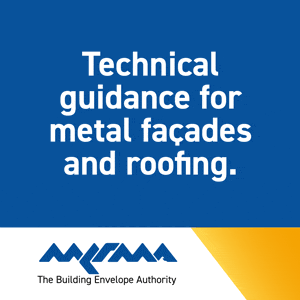Concerns grow around water neutrality
- Specify & Build
- Jul 2
- 3 min read
Chris Goggin looks at concerns around water neutrality and the ways in which its influence will be felt across the construction and HVAC industries.
‘Water neutrality’ aims to ensure that when new building developments are planned and completed, there is no dramatic increase in water consumption in the surrounding area. The idea is to achieve this by reducing water consumption, reusing water and offsetting water demand. Water neutrality is expected to become a better recognised term as localised construction projects could be cancelled due to issues relating to local water supplies.

An increasing population and more instances of climate change-induced drought across the UK has created the conditions for water neutrality to become a concern for local district councils planning new construction projects. As demand for water and housing intensifies, real concerns are now being expressed regarding localised water supplies.
West Sussex County Council has enforced a set of measures on property developers that protect local biodiversity and natural water supplies. The Council’s website provides information for individuals interested in constructing property. That information reads as:
‘Development proposals within the zone area that would lead to an increase in water demand will need to demonstrate and robustly evidence ‘water neutrality’.
· You will be required to supply a water neutrality statement with your planning application which:
· confirms that there would be no increase in water consumption, for example, through a combination of water efficiency, water recycling and offsetting measures
· includes a water budget showing details of the baseline and proposed water consumption, any mitigation measures proposed and mechanisms to secure them in advance of occupation or use.’
A water neutral development may also have to add measures to buildings such as roof-based rainwater collection and smart meters that inform occupants of ideal water consumption levels. A concerted effort to repel water neutrality has begun to oppose the idea that property developers should adhere to water neutrality guidelines. A consortium referred to as Houses for Homes and consisting of agents, developers, builders, as well as the Builders Federation inside the North Sussex Supply Zone, are collaborating to ensure that local developers and builders are not financially punished.
Houses for Homes believe the responsibility for local water resources rests with regional water companies – in this case, Southern Water. Houses for Homes argues that Southern Water should be responsible for demonstrating to West Sussex County Council that local water supplies are not impinged upon – not local contractors and tradesmen.
A representative of an international water technology company commented on the lack of clarity regarding the commercial as well as ecological responsibility water neutrality encourages, saying: “It is clear that government policy has yet to establish a clear and workable mechanism to allow water neutral developments to proceed. The need for new housing and a climate-resilient water supply are both important and a clear policy is needed to balance these two key priorities. It seems likely that this is on the agenda for the future. For now, committing to deliver a water-neutral development could still strengthen the case for development, particularly in areas where water availability is constrained or likely to be in the future.”
Water neutrality is yet to be enshrined in UK policy and is therefore subject to separate interpretations from involved parties leading to a clear lack of understanding involving best practise. Technical yet-to-be established legality issues aside, the subject of water neutrality is attracting attention for more basic reasons.
It is predicted that, by 2050, the UK will have a 4 billion litre/day shortfall in water supplies, with the south-east of England to be the area most at risk of drought due to population growth and intensity. By 2050, it is also estimated that the east of England will have a daily water shortage of up to 800 million litres. The east of England is also classified as “severely water stressed” according to the website of Water Resource East (WRE), a non-profit organisation consisting of water companies and the public. WRE believes that unless action is taken, agriculture, biodiversity and the local population could suffer from water shortages in the future. To prevent this, WRE has requested £15 billion investment to ensure the East of England maintains safe, clean and substantial volumes of water for people and the local ecosystem.
To learn more about water neutrality, specifiers can take part in Rinnai’s free water neutrality CPD (places are limited).
























































.png)
